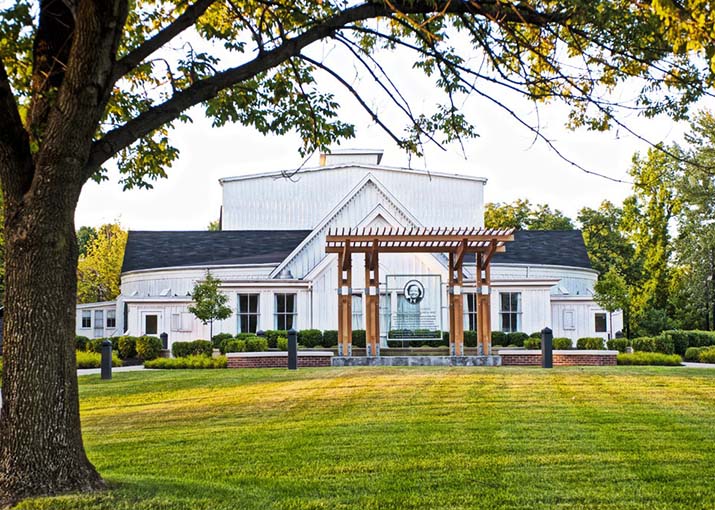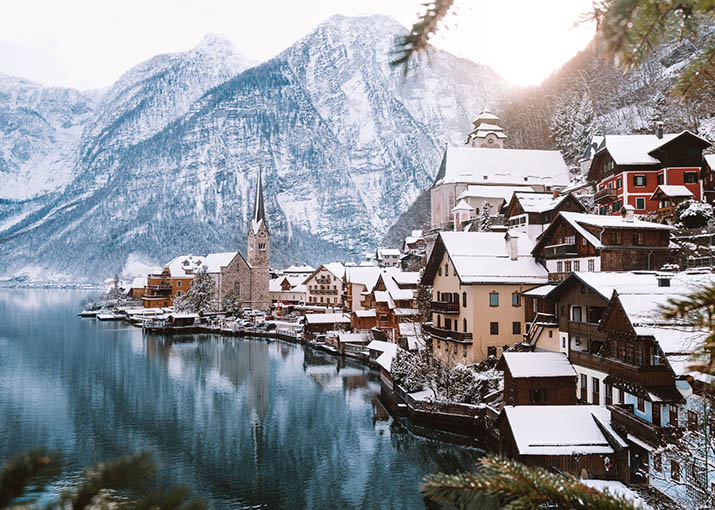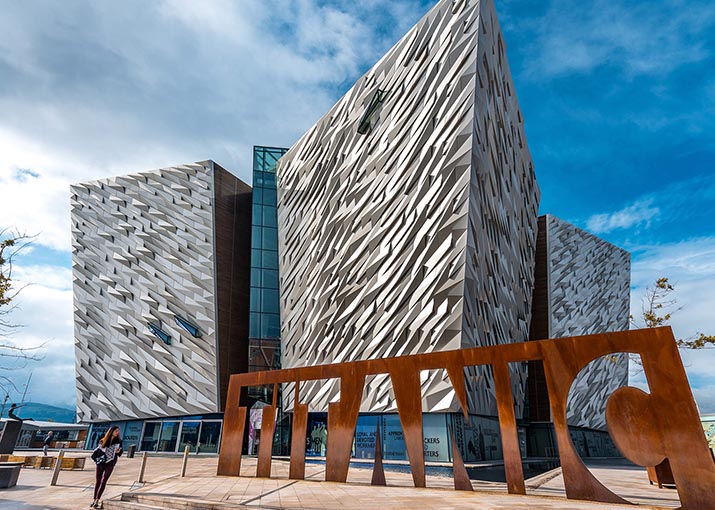— A Deep Journey Across History and Art
When we talk about Londonderry (also known simply as Derry) in Northern Ireland, most people immediately think of the famous Walled City, the long-standing religious and political divisions, or the haunting memory of Bloody Sunday. Yet for those travelers who seek to understand the soul of a place, Derry offers far more than just its well-known landmarks.
I recently traveled through Londonderry and stumbled upon five underrated cultural landmarks. These places, while low-key and quiet, hold some of the city’s deepest, most untold stories.
Follow me as I explore these hidden gems – each one a window into the soul of Derry, waiting for you to stop, listen, and breathe in the city.
1. The Playhouse — Artistic Soul in an Old Convent
Tucked away at the end of a quiet street in the heart of Londonderry, The Playhouse is a cultural arts center converted from an old convent. Founded in 1992 by a group of local women artists and peace activists in response to the community’s deep longing for healing and expression during the Troubles, it remains one of the most vibrant creative hubs in the city today.
More than just a theater, The Playhouse pulses with creative energy every day. It hosts daily art workshops for children and adults, community theatre rehearsals featuring local voices, youth photography exhibitions that reveal raw perspectives of post-conflict identity, and even drama therapy sessions aimed at supporting mental health and trauma recovery. The center has also been involved in several peacebuilding initiatives through cross-border artistic collaboration between Northern Ireland and the Republic.
I was lucky to visit on a rainy afternoon and caught a youth-led theatre piece about life on the other side of the Peace Wall — a powerful story blending spoken word, song, and movement. When the final curtain fell, the entire audience rose in applause — the authenticity and emotional power left me speechless. It was a reminder of how art can speak louder than politics.
Highlights:
- Hosts regular cross-cultural arts festivals, including work from international artists
- Offers free community art courses, including inclusive programs for disabled artists
- Includes a cozy art gallery and bookstore featuring local authors and handmade crafts
2. Backstreet Art Behind Free Derry Corner — Whispers of Rebellion Beyond the Murals
Free Derry Corner is already an iconic site for visitors, its bold white wall emblazoned with the words “You Are Now Entering Free Derry” standing as a symbol of civil rights resistance. But few know that hidden in the alleys behind it lies a lesser-known world: an underground “gallery” crafted by a loose collective of non-mainstream street artists, poets, and youth activists.
These artists, often anonymous and without institutional backing, use graffiti, sticker art, cardboard installations, stencil work, and interactive QR codes to reflect on contemporary issues like climate change, gender identity, housing struggles, and post-Brexit tensions. Their work is intensely local and sharply political, but also deeply emotional and philosophical — speaking from the margins with voices that are otherwise unheard.
There, I met an artist who called himself the “Anonymous Craftsman.” With a weathered rucksack and a sly grin, he guided me through narrow paths and peeling walls to a converted mailbox turned into a “people’s museum.” Inside were rolled-up protest flyers from the 1990s, pages from zines, hand-annotated manifestos, and a thick sketchbook documenting graffiti from Belfast to Berlin — a mobile archive of resistance art. Some of his installations even include hidden audio recordings accessible via QR, allowing passersby to hear poems or testimonials on their phones.
Suggested Route:
- Walk 3 minutes from Free Derry Corner toward the Lecky Road alleyways, ideally during late afternoon light for photos
- Look for mailboxes, drainpipes, and electricity boxes covered in stickers and QR-coded graffiti — many link to short films or personal stories by the artists themselves
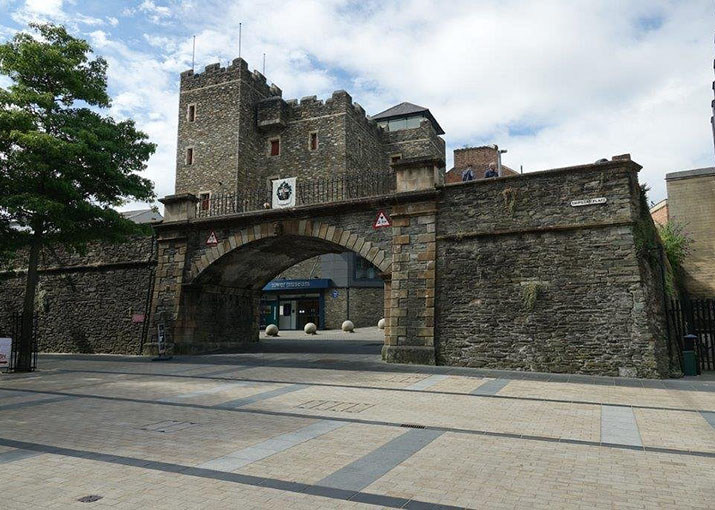
3. The Pirate Graveyard Beneath Tower Museum — Forgotten Shadows of Colonial Trade
While the Tower Museum is a well-known destination for learning Derry’s history, very few visitors explore the overgrown, fenced-off graveyard right beneath it — a moss-covered slope behind the old museum courtyard. It’s a space often mistaken for an abandoned plot, but those who take a closer look will find it’s one of the city’s most enigmatic corners.
This small burial ground holds the remains of 17th-century colonial soldiers, pirates, traders, and other foreign visitors tied to the Atlantic trade and maritime exploration. Many headstones are inscribed in Spanish, Dutch, and French — silent markers of Derry’s complex entanglement with European empires and sea routes. The stones are weather-worn, but a few still display engraved ship motifs, skeletal hourglasses, and haunting Latin phrases about fate and the sea.
A local history volunteer told me the oldest grave belongs to a sailor from Cádiz who died from a mysterious illness, believed by some to be tied to the “bloody cost” of early Atlantic commerce — possibly a plague brought by trade ships or a tropical disease contracted during a voyage. Some locals say the graveyard is haunted, and others believe it’s a site of historical reckoning — where Derry’s maritime ghosts still linger.
Experiential Add-ons:
- Join the weekend-only “Underground History Tour” via the museum (pre-booking required), which includes rare access to graveyard archives
- Free walking commentary available through local volunteer groups (check Facebook listings and local history meetups)
- Bring a torch if visiting late afternoon — the trees cast eerie shadows as the sun fades
4. The Garden of Reflection — A Quiet Space Amid Urban Scars
Nestled beside the city walls, the Garden of Reflection might appear at first glance like just another peaceful plaza with flowers and sculptures. But once you step in, the quiet transforms — it becomes a sacred space where the city breathes through silence. This garden is not just a public installation but one of Derry’s most powerful and symbolic places of reconciliation and recovery.
Built through a local peacebuilding initiative after the 1998 Good Friday Agreement, this space represents healing, community dialogue, and the painful but necessary act of remembering. Its central “mirror wall” — a highly polished slab of steel — reflects the visitor’s image back at them. It encourages self-reflection not only in the literal sense but also in terms of identity, legacy, and personal responsibility within a shared history.
I met an elderly couple there who once belonged to opposing religious communities. He was raised Protestant, she Catholic, and they grew up on different sides of the Peace Wall. Through a community arts project in this very garden, they met, painted their first mural together, and eventually fell in love. Their story is one of many woven into the garden’s flowers, benches, and art paths — a living testament to what happens when walls are turned into canvases.
Features to Explore:
- Mirror Wall sculpture: see yourself, and the city, in new light
- Peace path: a walkway inlaid with tiles bearing quotes from children, artists, and peacemakers across generations
- Occasional public events and poetry readings — check with the Holywell Trust nearby for event listings
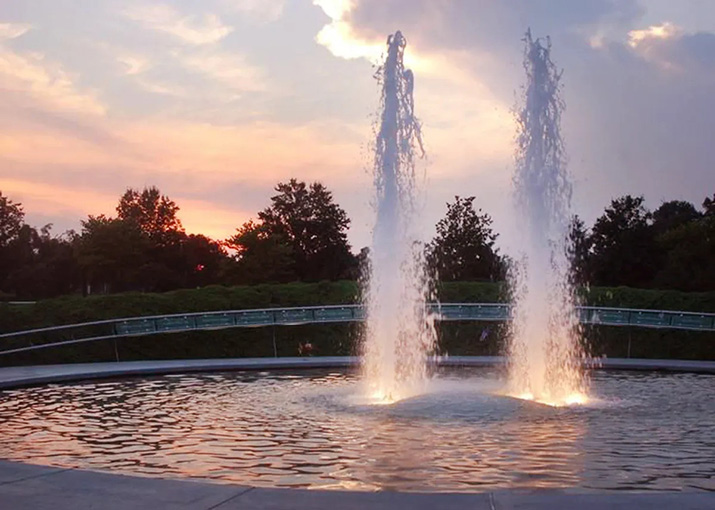
5. Craft Village Night Market & The Storyteller’s House — Tales from the Heart of the City
Craft Village is a quaint, old-fashioned artisan quarter nestled in the heart of Derry. By day, it’s a charming place filled with shops selling handmade goods, local crafts, and the sweet smell of freshly baked treats. However, it is when the sun sets that the true magic of this place unfolds. Each weekend, a group of local storytellers gathers in the heart of the village, where the vibrant energy of the night infuses their performances. They share music, poetry, folk songs, and compelling oral histories that carry the essence of Derry’s rich past. The stories transport visitors back in time, offering insights into the city’s history that textbooks often fail to capture.
At the heart of Craft Village stands a small, cozy, candlelit shop known as “The Storyteller’s House.” This unique venue, devoid of any electric lighting, uses only the glow of candles and lanterns to create a warm, intimate atmosphere. Inside, you’ll find vintage chairs and tables, old books lining the shelves, and antique maps that adorn the walls, making you feel as though you’ve stepped back in time to an era where storytelling was the primary means of passing down knowledge.
One evening, I was fortunate enough to hear a local elder recount how his grandfather had bravely smuggled children through the city’s walls during a siege. His voice trembled with emotion, and the personal connection to the story was palpable, leaving a deeper mark on my heart than any history lesson could. In that moment, I truly understood how stories can keep the spirit of a place alive, long after the events themselves have passed.
Evening Tips:
- Storytelling sessions take place every Friday night from 7–9 PM, free to attend but donations are warmly welcomed to support the storytellers.
- You can sign up on-site to record your own oral history story, adding your voice to the rich tapestry of Derry’s collective memories.
Hidden Landmarks, Honest Echoes
Derry is a city of pain and hope intertwined. Its walls don’t just divide space; they once separated identities. But when we step off the beaten tourist path and into these corners of forgotten history — alleys, graveyards, gardens, and old shops — we begin to hear the city whisper its truth.
Travel isn’t just about checking boxes. It’s about confronting history, connecting with humanity, and rediscovering what makes a place truly alive. So next time you’re in Derry, take your time. Wander. And seek out these hidden places — for they hold the deepest stories of all.
